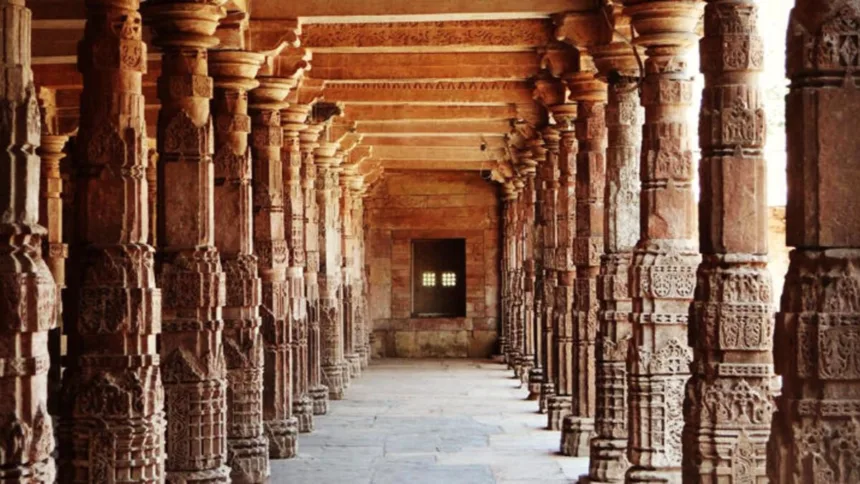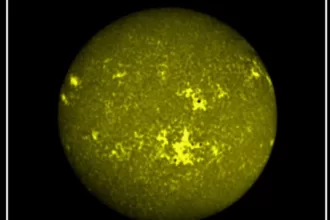Hearing on different petitions is going on before the Indore bench of Madhya Pradesh High Court regarding Bhojshala. One of these petitions is that of Hindu Front for Justice, a Lucknow organization which has filed a petition in the Allahabad High Court regarding the ASI survey of Gyanvapi in Varanasi. Hindu Front for Justice has demanded a survey of Bhojshala by the Archaeological Survey of India on the lines of Gyanvapi.
Bhojshala History ASI Survey: Following the order of Indore Bench of Madhya Pradesh High Court, ASI (Archaeological Survey of India) survey of Bhojshala in Dhar will start from March 22, 2024. The Archaeological Survey of India has also issued an official notice on Thursday for the survey of the Bhojshala complex. ASI’s notice has come after the order of Indore bench of Madhya Pradesh High Court.
Like Gyanvapi, in Bhojshala too, it will become clear from the ASI survey what kind of symbols, architectural style and heritage are there. Maulana Kamaluddin Welfare Society has approached the Supreme Court against the order of Indore bench of Madhya Pradesh High Court regarding the direction to conduct survey of Bhojshala. Let us know what is Bhojshala and why there is so much controversy over it…
What is the history of Bhojshala?
Raja Bhoj reigned over Dhar in Madhya Pradesh thousands of years ago. Raja Bhoj founded the Vidya temple here, which subsequently became known as Bhojshala. It is reported that Muslims broke its holiness centuries ago when they constructed Maulana Kamaluddin’s mausoleum. Whereas even today in Bhojshala, there are pictures of Gods and Goddesses and verses written in Sanskrit. Excavations were carried out here in the 18th century, in which the statue of Goddess Saraswati was found. The British took this statue to London. At present this statue is in the Museum of London and a petition has been filed in the High Court demanding the withdrawal of this statue.
Bhojshala premises will be surveyed after 121 years
From March 22, 2024, the ASI team will investigate the 50 meter area of Bhojshala with GPR and GPS techniques. ASI will examine every movable and immovable object located in the Bhojshala premises, including walls, pillars, floors etc. with carbon dating technique. ASI survey is going to be conducted again after about 121 years in Bhojshala complex located in Dhar district of Madhya Pradesh. Before this, during the year 1902-1903, ASI had surveyed the Bhojshala complex.
Why is there controversy over Bhojshala?
Separate petitions have been filed in the court regarding puja and namaz in Bhojshala. The ASI assessed the condition of the Bhojshala complex in 1902 and 1903 and told the court that it had no objection to the present petition seeking scientific investigation of the complex. ASI had also presented the investigation report of the survey conducted in the year 1902 during the debate in the court. Photographs were also attached in the ASI report. Lord Vishnu and lotus are clearly visible in these. ASI had also said in its report that clear signs of a temple have been found in Bhojshala. After this, the dispute escalated considerably, and communal violence took place several times in Dhar.
In Dhar, Madhya Pradesh, there is a controversy surrounding the idol of Saraswati placed in Bhojshala Kamal Maulana Masjid. The Hindu side has put forth a theory about the origin of this idol. Upon investigation, it was discovered that the idol had been placed there after cutting pic.twitter.com/2DksOCEF28
— The Journaltics (@The_Journaltics) September 10, 2023How was permission given for worship and namaz in Bhojshala?
Bhojshala is an ASI-protected monument, which Hindus consider to be the temple of Goddess Saraswati, while those belonging to the Muslim community consider it to be Kamal Maula Masjid. Hindus are permitted to offer prayers inside the Bhojshala complex on Tuesdays, while Muslims are permitted to give namaz inside the complex on Fridays, according an ASI ruling of April 7, 2003.
Read More: PM Modi: India’s Youth Leading Startup Revolution, Roadmap for 2047 Underway






